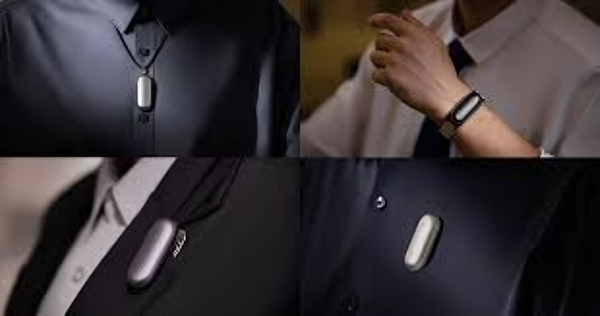Unveiling the Creepy Truth About Your Morning Coffee

Your morning coffee—that steaming, aromatic ritual that kickstarts your day—might be hiding a secret that’ll make your skin crawl. No, it’s not about caffeine overload or pesticide residues. It’s about cockroaches. Yes, those scurrying, antennae-waving pests might be ground up in your pre-ground coffee, and it’s perfectly legal across the globe. From the U.S. to Europe to India, insect fragments are an unavoidable reality in coffee production, sanctioned by regulatory bodies like the FDA and implicitly tolerated by others like FSSAI. But how does this happen, and why is it allowed? Let’s dive into the gritty details of coffee processing, global standards, and what this means for your daily brew.
The Unavoidable Reality of Insect Infestation
Coffee begins its journey as cherries on plants in tropical regions, where pests like the coffee berry borer beetle and coffee bean weevil thrive. These insects don’t just nibble; they bore into the beans, leaving larvae, pupae, and debris behind. The coffee berry borer (Hypothenemus hampei), a tiny beetle, burrows into the cherry to lay eggs, with larvae feeding on the bean itself. The coffee bean weevil (Araecerus fasciculatus), a storage pest, infests beans post-harvest in warm, humid climates, creating bored holes and irregular surface damage. These pests are tough to eliminate entirely, especially in large-scale operations where coffee is stored in massive piles before processing.
During harvesting, drying, and storage, coffee beans are exposed to environments where cockroaches and other insects can infiltrate. Cockroaches, notorious for thriving in dark, moist conditions, often find their way into storage facilities. Once there, they’re nearly impossible to remove completely. When beans are ground, any insect remnants—legs, heads, or exoskeletons—get pulverized into microscopic insect fragments that blend seamlessly with the coffee. This isn’t a horror story; it’s a practical reality of agricultural processing. The sheer volume of coffee processed globally makes absolute purity a pipe dream.
What the FDA Says About Insect Fragments
In the United States, the Food and Drug Administration (FDA) regulates food safety, including coffee, under the Federal Food, Drug, and Cosmetic Act. The FDA’s Food Defect Levels Handbook acknowledges that “natural or unavoidable defects” like insect fragments are inevitable in food production. For green coffee beans, the FDA sets a defect action level of 10%—meaning up to 10% of beans by count can be insect-infested or insect-damaged without triggering regulatory action. This translates to roughly 4-6% of insect material in the final ground product after roasting and grinding.
The FDA’s stance is pragmatic: complete elimination of non-hazardous contaminants is “economically impractical.” Insect fragments, rodent hairs, and even small amounts of animal feces (up to 10 milligrams per pound) are deemed safe for consumption at these levels. The agency emphasizes that these thresholds don’t mean manufacturers can be sloppy; they’re expected to maintain rigorous pest control and keep defects well below the maximum. However, the presence of cockroach fragments isn’t specifically documented, as the FDA groups all insect matter under broad categories like “insect filth.” Coffee is more likely to contain fragments from beetles or weevils, but cockroaches aren’t explicitly excluded, especially since they’re common in processing environments.
FSSAI’s Ambiguous Standards
In India, the Food Safety and Standards Authority of India (FSSAI) governs food regulations, including beverages like coffee. Unlike the FDA’s explicit defect levels, FSSAI’s standards for coffee are less detailed about insect fragments. The FSSAI’s regulations for tea (under Section 2.10.2) state that insect fragments must not be “visible to the naked eye,” suggesting that microscopic remnants post-grinding are tolerable. For coffee, the FSSAI specifies that products like roasted or ground coffee should be free from “living insects” and “foreign matter” but doesn’t set a clear threshold for processed insect fragments.
This ambiguity implies that trace amounts of insect fragments may be permitted in Indian coffee, especially since complete removal is acknowledged as challenging. FSSAI’s stricter stance on products like chocolate—which must be free from insect contamination—highlights a contrast, but coffee seems to fall into a gray area. The lack of explicit prohibition mirrors global practices where tiny, indistinguishable insect remnants are accepted as part of the food supply chain.
Global Coffee Processing Standards
Coffee production is a global industry, and standards vary by region, but the issue of insect contamination is universal. In Europe, the European Food Safety Authority (EFSA) aligns with Codex Alimentarius guidelines, which set general food safety principles but don’t specify defect levels for coffee. Individual countries like Germany or France rely on national regulations, often adopting a practical approach similar to the FDA’s. For instance, Germany’s Federal Institute for Risk Assessment (BfR) acknowledges that insect fragments in processed foods are unavoidable and safe at low levels.
In countries like Brazil and Colombia, major coffee exporters, processing facilities face the same pest challenges. Beans are cleaned, sifted, and roasted to minimize contaminants, but cockroaches and other insects can still slip through. Roasting at temperatures above 400°F (204°C) kills insects and pathogens, but their fragments remain. Grinding further reduces these to undetectable particles, making them indistinguishable from coffee grounds. Small-batch roasters, often in specialty coffee markets, may have tighter controls, but even they can’t guarantee zero insect presence.
Why It’s Hard to Keep Coffee Pure
Coffee’s journey from farm to cup processing facilities is fraught with opportunities for contamination. After harvesting, cherries are dried, often outdoors, where insects can access them. During storage, beans are stored in sacks or silos, sometimes for months, in humid, pest-friendly conditions. Cockroaches, attracted to the beans’ organic matter, can infiltrate even well-maintained facilities. Cleaning processes—washing, sifting, or air-blowing—remove larger debris, but microscopic fragments persist.
Quality control measures, like visual inspections or electronic sorting, catch obvious defects, but they’re not foolproof. For pre-ground coffee, which dominates 75% of U.S. coffee sales, these fragments are ground into the final product. Whole beans offer more control—you can inspect them before grinding—but even then, tiny remnants may escape notice. Specialty roasters, like Nomad Coffee in Spain, emphasize sourcing high-quality beans and rigorous cleaning to minimize defects, but absolute purity remains elusive.
Is It Safe to Drink Cockroach-Infused Coffee?
Here’s the reassuring part: insect fragments in coffee are safe. The FDA, EFSA, and other regulators set thresholds based on scientific evidence showing no health risks from low-level contaminants. Cockroach fragments, like other insect parts, are primarily protein and chitin, which humans can digest. For most people, these traces are harmless, akin to eating shrimp shells or cricket flour, a growing food trend.
However, there’s a catch. Cockroaches carry allergens, notably tropomyosin, which can trigger reactions in sensitive individuals, similar to shellfish allergies. People with shellfish allergies may react to coffee due to these cross-reactive proteins, as noted in some anecdotal reports. For the general population, though, the risk is negligible, and the taste or quality of coffee remains unaffected by these microscopic bits.
How to Minimize Insect Fragments in Your Coffee
If the idea of cockroach fragments in your coffee makes you queasy, you can take steps to reduce exposure:
- Buy whole beans: Inspect and grind them yourself to catch visible defects. Specialty roasters often have stricter quality controls.
- Choose small-batch coffee: Artisanal roasters prioritize cleaner beans and better processing, reducing contaminant levels.
- Store coffee properly: Keep beans in airtight containers in cool, dry places to deter pests like pantry moths or cockroaches.
- Support transparent brands: Companies like Nomad Coffee publish detailed sourcing and processing info, offering peace of mind.
These steps won’t eliminate all insect fragments—that’s impossible—but they’ll get you closer to a purer cup.
The Bigger Picture of Food Safety
The presence of insect fragments in coffee isn’t a scandal; it’s a reality of food production. Grains, spices, chocolate, and even peanut butter contain similar trace contaminants, all regulated to ensure safety. The FDA and FSSAI balance practicality with public health, recognizing that zero defects would make food prohibitively expensive or unattainable. Insects are part of the agricultural ecosystem, and short of growing your own coffee (good luck with that), some level of contamination is inevitable.
This doesn’t mean you should shrug and accept low standards. Push for transparency, support ethical roasters, and stay informed about what’s in your food. Coffee’s dark roast might hide a darker truth, but armed with knowledge, you can sip with confidence—cockroach fragments and all.
SOURCES:
1. https://www.fda.gov/food/laboratory-methods-food/mpm-v-1-beverages-and-beverage-materials
2. https://nomadcoffee.es/en/blogs/news/tu-cafe-tiene-cucarachas-el-nuestro-no
3. https://sprudge.com/dont-worry-there-are-acceptable-levels-of-ground-up-cockroaches-in-coffee-tins-152088.html
4. https://www.treehugger.com/are-there-ground-up-cockroaches-in-your-coffee-4868650
5. https://www.foodandwine.com/cockroaches-in-coffee-8674033
6.https://www.fssai.gov.in/upload/uploadfiles/files/11_%20Chapter%202_10%20(BEVERAGES%2C%20(Other%20than%20Dairy%20and%20Fruits%20%26%20Vegetables%20based).pdf



